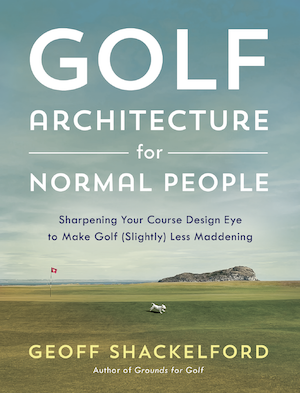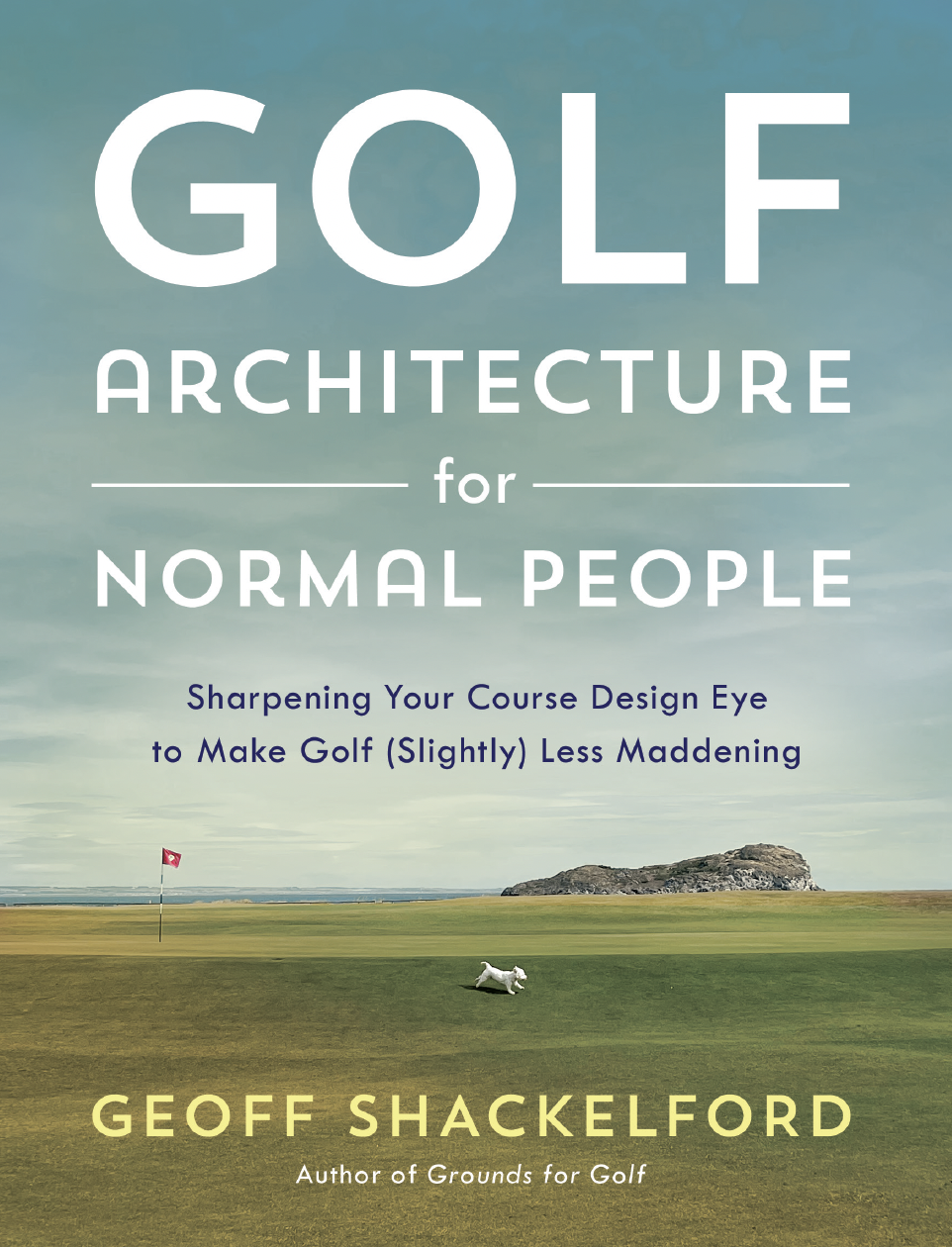The stories are finally trickling out on the USGA's proposed groove rule change, and I suppose it's a matter of taste, but there are three unique takes.
John Paul Newport files another of those all-over-the-place columns where he seems to have an opinion, but writes in fear of his pro-business Wall Street Journal editors. I have to admit that it's entertaining to actually read someone waivering dramatically from sentence to sentence. If you want to save yourself the trouble, it comes down to this: Newport doesn't want to give up 10 yards.
Furthermore, speaking for myself, even if someone persuaded me that switching to shorter balls was necessary for the good of the game, I can't imagine being happy about it. I'd hate to have to start laying up short of that bunker on No. 2 that I now carry. Getting older is enough of a burden without having to play a shorter ball, too.
For those of you keeping score at home, that's five self references in two sentences. Oh, and he called ball companies for perspective on the issue. Next week, Newport will be calling tobacco companies for their views on the possibility of cigarette smoking causing cancer.
Though the calls make this worth the price of admission:
Titleist has been especially aggressive in countering any whisper of support for ball rollback. Joseph Nauman, an executive vice president at Titleist's parent company, Acushnet, acknowledges that its executives have had "very pointed conversations" with media and other organizations about the issue. In 2004, at the height of the alarums about distance, Titleist started pulling all of its ads from the industry's most outspoken magazine, Golf Digest. Mr. Nauman says that wasn't a response to articles on the distance controversy, but the action had a chilling effect nonetheless on ad-dependent media throughout the industry.
Wally, you would do that? I'm shocked! Not the Wally I know!
Steve Elling does a nice job of providing a "balanced" take on the issue, considering both sides of the equation. Elling seems to buy into the USGA's logic (V-grooves will lead players to throttle back), he too concludes that the distance and ball debate isn't going away.
Finally John Huggan weighed in with is Scotland on Sunday column.
Don’t look now folks, but that nifty new wedge in your golf bag is, sometime down the road, going to be deemed illegal. It’s nothing you did – or can do – with the club you understand. But the boogie men at the Royal & Ancient Golf Club of St. Andrews and their sidekicks at the United States Golf Association have, in their finite wisdom, decided that something has to be done about those nasty square grooves on the face of a club you mostly use to hack back into play after another of
those sliced tee-shots. Ironically, it is the seeming indifference of the world’s top players to the seemingly ever-increasing disconnection between success and accuracy off the tee that has golf’s officials in a bit of a tizz.
And he quotes a former player...
“When I first started on tour back in the mid-1980s, I would watch players like Seve Ballesteros, Ian Woosnam, Bernhard Langer and Jose Maria Olazabal crap themselves when faced with a ‘jumpy’ lie from the rough,” says a former European Tour professional of my acquaintance. “They knew that if the shot went wrong they would be 30-40 yards over the green, rather than on the back edge of the putting surface, which has invariably been the case recently. For that reason alone, V-grooves have to be brought back; we need to put fear back into the game.”
Now, while all of the above is just fine by me, it must be added that even this welcome move by the game’s ruling bodies is, at best, only a start in the on-going battle to restore elite golf to its former glories. The ability to spin shots from long grass is, after all, merely an effect; the real problem is the nonsensical distances the world’s best players can propel their tee-shots using balls that a) go too far and b) fly too straight. Which is why you don’t see any of today’s big names shaping shots like Ballesteros and Lee Trevino used to do. Sadly, golf at the highest level has become a science rather than an art.
Still, it would be wishful thinking on our parts to see this latest development in the technology war doubling as a prelude to the R&A and USGA hauling the ball back 40-50 yards for Tiger and the gang. That ain’t going to happen as long as the tacit threat of legal action from club and ball manufacturers hangs over their graying heads.
Sadly, cowardice – albeit understandable - rules when it comes to taking on high-powered lawyers employed by the likes of Titleist, Callaway and TaylorMade. Even this latest development has come to pass only because the manufacturers know full well that square grooves or V-grooves make no difference to the average golfer (when was the last time you ‘sucked’ a wedge shot back to the pin?). Which is why the ban is only going to apply to so-called ‘elite players’ and why the club makers were thrown a bone in the shape of a rules change that will allow adjustable lofts and lies on clubs.
This is an interesting question he raises...
There are, however, wider implications in that a line has to be drawn somewhere. When and where will a golfer magically become ‘elite’ having previously been, eh, ‘non-elite?’ Until now, the R&A and USGA has been vehemently opposed to what they call ‘bifurcation,’ a situation where amateurs and professionals would play the game under different rules (despite the fact that, largely due to the exponential benefits available to those who can swing modern clubs over a certain speed, the gap between the two codes has never been wider).












